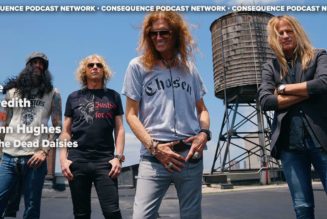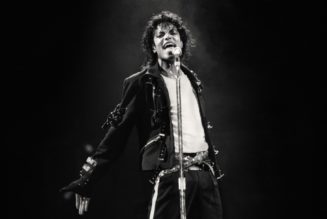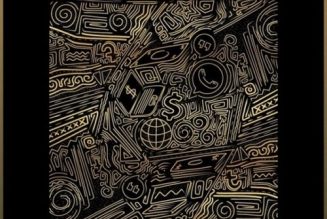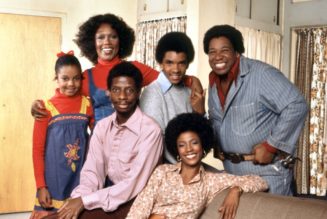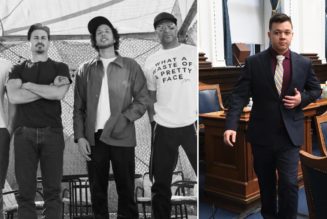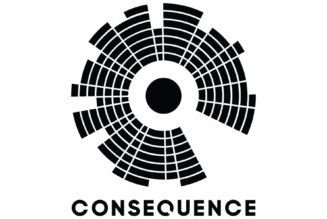The electric guitar and rock music have been inseparable pretty much since the get-go. One of the best ways to grab the attention of listeners is to come up with a guitar riff that immediately distinguishes a song, sounds great at first listen, and proves to be enough of an earworm that listeners never really get tired of it. Easier said than done, of course. But when it’s done right, the reverberations can resound for a seemingly infinite amount of time. Here are five riffs that are indelibly stamped in the minds and hearts of rock and roll fans.
Videos by American Songwriter
1.”Johnny B. Goode” by Chuck Berry (1958)
You’ll never get much consensus on who is the most impactful artist of rock and roll’s earliest days. But if you’re not mentioning Chuck Berry somewhere in that very short list, you are way off base. Berry developed the structure of the up-tempo rock song that has been copied ever since, and he proved that artists could also be songwriters at a time when that wasn’t a common thing. And then there’s “Johnny B. Goode,” which he wrote about his own life story but became a kind of ideal for anyone who picked up an electric guitar. On top of that, that opening burst of guitar from Berry was one of the first riffs the genre produced and still remains iconic (just ask Marty McFly.) It’s not that it’s that complex; when you think about it, it’s mostly based on a single note. But the way that Berry used it as an orienting element to draw in listeners served as a template for all future riff-rockers to come.
2. ”You Really Got Me” by The Kinks (1964)
You could make the argument that Dave Davies’ riff at the beginning of “You Really Got Me” was the moment that rock and roll started morphing into just “rock.” Oddly enough, the song was originally a bit of a jazzy number. Dave’s brother Ray wrote the song, which was inspired by an attractive female fan, on the piano. It’s hard to say what Dave heard in the track that made him think of it going in a much more aggressive direction. But when others were exposed to the fuzzed-out power chords that Dave played to start off the song, they heard “You Really Got Me” transform from a pleasant little ditty to an unstoppable dynamo. You can hear the seeds for punk, glam rock, and garage rock in those first few seconds. It also removed a lot of the rhythmic swing found in early rock and roll records; you couldn’t really dance so much as throw your body around to it. The Kinks’ third single, “You Really Got Me” turned the band into international superstars, with that riff as the calling card.
3. “(I Can’t Get No) Satisfaction” by The Rolling Stones (1965)
If someone were to ask you how “Satisfaction” goes, what would be your first reaction? Probably not to sing the chorus, but rather to belt out “Bum-bum-ba-da-dum” to mimic Keith Richards’ opening guitar lick. In typically iconoclastic Richards fashion, he wrote the riff before bed and didn’t remember doing so the next morning. Luckily, he had the wherewithal to have a tape recorder running (one that also picked up his snoring once he fell asleep.) The Stones were already making progress as one of many British Invasion bands, but this song propelled them to another level. When you coupled Richards’s riff with Mick Jagger’s braying about the injustices piled on his hapless narrator, it was an irresistible combination that created a chart-topper worldwide. Richards must have liked the riff, considering he slightly altered it, gave it a darker edge, and ended up with “Jumpin’ Jack Flash” just a few years later.
4. “Whole Lotta Love” by Led Zeppelin (1969)
The only problem about including Jimmy Page on this list is figuring out which of his riffs to include. We could have chosen the mystical beginning of “Kashmir,” the riff that snakes all around “Black Dog,” or the frenetic foundation of “The Immigrant Song.” But that jackhammering opening to “Whole Lotta Love” wins out for a few reasons. First, it kicked off a song that helped introduce Zep to a much wider audience when it was released (in an edited version) in the US and muscled its way into the Top 10 on the pop charts. Beyond that, it helped set the tone for a style of hard rock that was a bit more aggressive and unrelenting than what had come before, meaning that it didn’t take much for a song like “Whole Lotta Love” to morph into the just-burgeoning genre known as heavy metal. Page claims to have written the riff on his houseboat. Maybe the waves were rocky that day, because there’s no way tranquil seas could have produced something so raucous.
5. “Layla” by Derek & the Dominos (1970)
See if you can spot this one, Eric Clapton cheekily tells his audience on the 1992 Unplugged version of “Layla.” It does indeed take the audience a second to identify the song and applaud, in large part because the opening seven-note riff is missing from the arrangement. Derek & the Dominos’ version begins furiously, setting the tone for a song about the anguish and torture of unrequited love (in this case Clapton’s torch for his best friend George Harrison’s wife Patti, who would eventually leave George for Eric.) There are conflicting reports about who actually wrote the riff in question. Some say Clapton had it in place from the start, while others claim that Duane Allman, who plays on “Layla” as well, came up with it in the studio. It’s generally agreed upon that, at some point, somebody made the choice to speed it up just a bit, which made a huge difference in the kind of impact it delivered. Regardless of its provenance, it’s the rock riff that launched all power ballads to come.
Photo by Don Paulsen/Michael Ochs Archives/Getty Images
